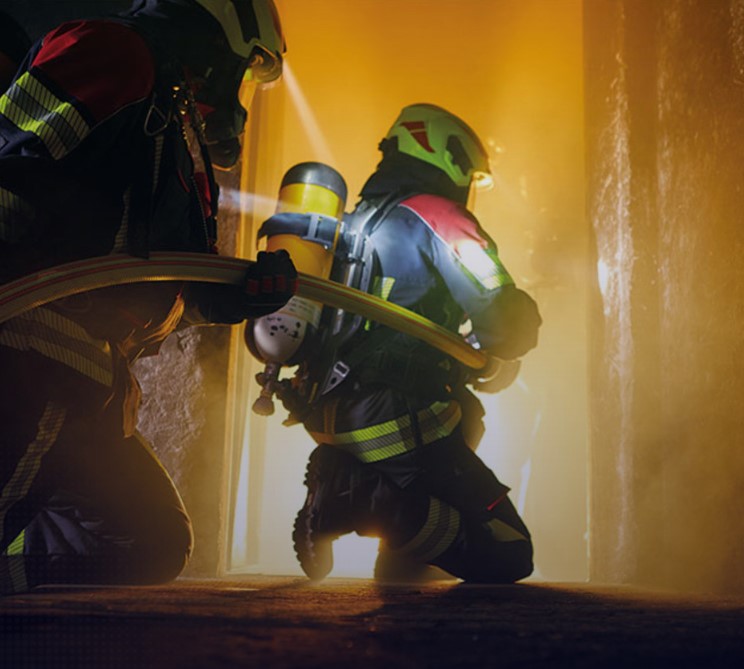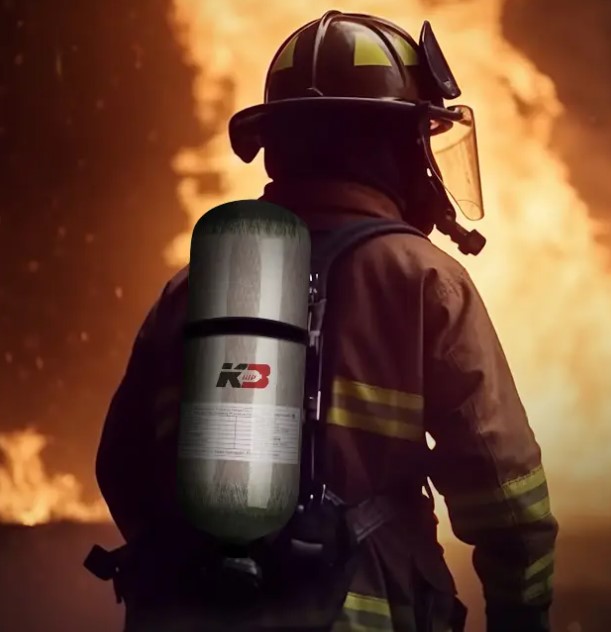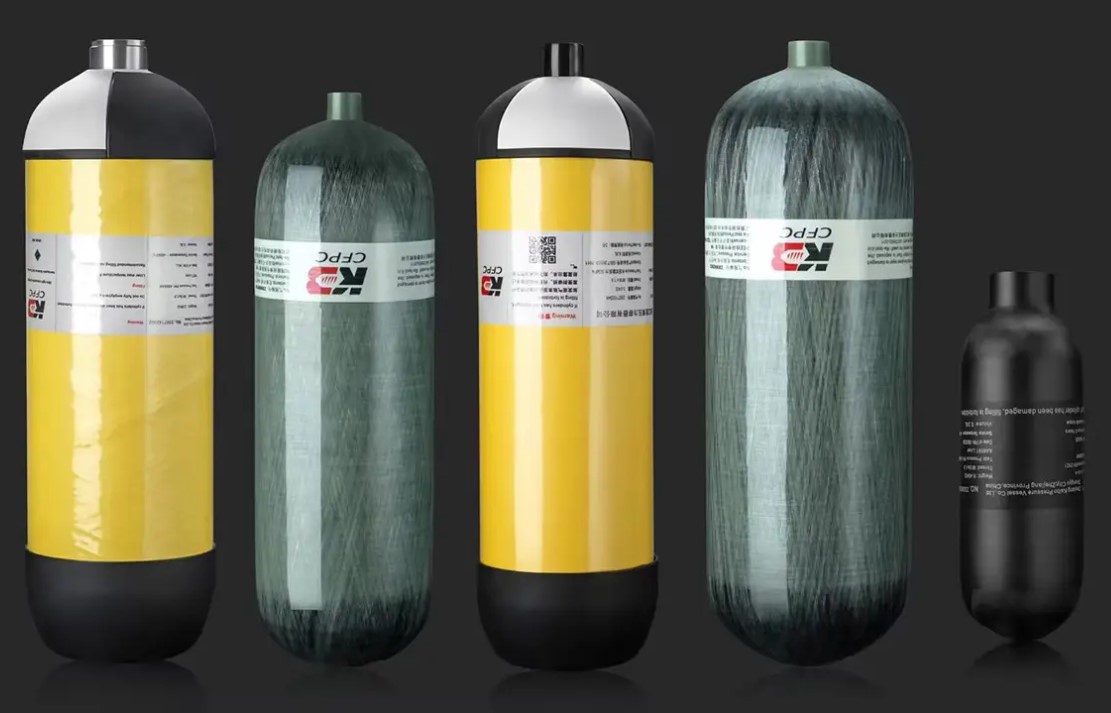Firefighters face incredibly dangerous situations, and one of the most critical pieces of equipment they carry is their Self-Contained Breathing Apparatus (SCBA), which includes an air tank. These air tanks provide breathable air in environments filled with smoke, toxic fumes, or low oxygen levels. In modern firefighting, carbon fiber composite cylinders are widely used in SCBA systems because they offer several advantages over traditional materials. One of the most important factors when it comes to firefighter air tanks is the pressure they can hold, as this determines how long the air supply will last in dangerous conditions.
What is the Pressure in a Firefighter Air Tank?
The pressure in firefighter air tanks is generally very high, ranging from 2,216 psi (pounds per square inch) to as much as 4,500 psi. These tanks are designed to store compressed air, not pure oxygen, allowing firefighters to breathe normally even in smoke-filled environments. The high pressure ensures that a significant volume of air can be stored in a relatively small and portable cylinder, which is essential for the mobility and efficiency required in emergency situations.
Firefighter air tanks come in different sizes, but most commonly, they are designed to provide between 30 and 60 minutes of air, depending on the cylinder size and pressure level. A 30-minute cylinder, for example, typically holds air at 4,500 psi.
The Role of Carbon Fiber Composite Cylinders in SCBA Systems
Traditionally, air tanks for firefighters were made from steel or aluminum, but these materials had significant drawbacks, particularly in terms of weight. A steel cylinder can be quite heavy, making it harder for firefighters to move quickly and maneuver through tight or dangerous spaces. Aluminum tanks are lighter than steel but still relatively heavy for the demands of firefighting.
Enter the carbon fiber composite cylinder. These cylinders are now the preferred choice in most firefighting departments around the world. Made by wrapping a lightweight polymer liner with layers of carbon fiber, these cylinders offer several important benefits for SCBA systems.
Key Advantages of Carbon Fiber Composite Cylinders
- Lighter WeightOne of the most crucial advantages of carbon fiber composite cylinders is their significantly lower weight. Firefighters already carry a large amount of gear, including protective clothing, helmets, tools, and more. The air tank is one of the heaviest items in their kit, so any reduction in weight is highly valuable. Carbon fiber composite cylinders weigh much less than steel or even aluminum, making it easier for firefighters to move swiftly and effectively in hazardous environments.
- High Pressure HandlingCarbon fiber composite cylinders are capable of withstanding extremely high pressures, which is a critical feature in SCBA systems. As mentioned, most firefighter air tanks are pressurized to around 4,500 psi, and carbon fiber cylinders are built to safely handle these pressures. This high-pressure capacity allows them to store more air in a smaller volume, which extends the time a firefighter can work before needing to change tanks or leave the dangerous area.
- DurabilityDespite being lightweight, carbon fiber composite cylinders are incredibly strong. They are designed to endure rough handling, high impacts, and harsh conditions. Firefighting is a physically demanding job, and air tanks can be exposed to extreme heat, falling debris, and other hazards. Carbon fiber’s durability ensures that the cylinder will remain intact and safe under these conditions, providing a reliable source of air for the firefighter.
- Corrosion ResistanceTraditional steel cylinders are prone to corrosion, particularly when exposed to moisture or chemicals that firefighters may encounter in their work. Carbon fiber composite cylinders, on the other hand, are highly resistant to corrosion. This not only extends the lifespan of the cylinders but also makes them safer to use in a wide range of environments.
Pressure and Duration: How Long Does a Firefighter Air Tank Last?
The amount of time a firefighter can spend using a single air tank depends on both the size of the cylinder and the pressure it holds. Most SCBA cylinders come in either 30-minute or 60-minute variants. However, these times are approximate and based on average breathing rates.
A firefighter working hard in a high-stress environment, such as fighting a fire or rescuing someone, may breathe more heavily, which can reduce the actual time the tank will last. Additionally, a 60-minute cylinder does not actually provide 60 minutes of air if the user is breathing rapidly due to exertion or stress.
Let’s take a closer look at how the pressure in a cylinder relates to its air supply. A standard 30-minute SCBA cylinder typically holds around 1,200 liters of air when pressurized to 4,500 psi. The pressure is what compresses that large volume of air into a cylinder that is small enough to be carried on a firefighter’s back.
Carbon Fiber Composite Cylinders and Safety
Safety is always the top priority when it comes to equipment used by firefighters. Carbon fiber composite cylinders undergo rigorous testing to ensure they can handle high pressures and extreme conditions. The manufacturing process involves precise engineering to create a cylinder that is both strong and lightweight. Additionally, these cylinders are subject to hydrostatic testing, a process in which the cylinder is filled with water and pressurized to ensure it can withstand the required working pressures without leaking or failing.
The flame-retardant properties of carbon fiber composite cylinders also add to their safety profile. In the heat of a fire, it is crucial that the air tank does not become a danger in itself. These cylinders are designed to resist extreme temperatures and protect the air supply inside.
Conclusion
Firefighter air tanks are essential for providing breathable air in life-threatening situations. The high-pressure capacity of these tanks, often reaching up to 4,500 psi, ensures that firefighters have access to a sufficient supply of air during emergencies. The introduction of carbon fiber composite cylinders has revolutionized the way these tanks are used, offering significant benefits in terms of weight, durability, and safety.
Carbon fiber composite cylinders allow firefighters to move more freely and stay in dangerous environments longer without needing to switch out tanks as frequently. Their ability to withstand high pressure and extreme conditions makes them the ideal choice for modern firefighting. With continued advancements in materials science, we can expect even more improvements in SCBA technology in the future, further enhancing the safety and efficiency of firefighting operations.
Post time: Oct-14-2024



